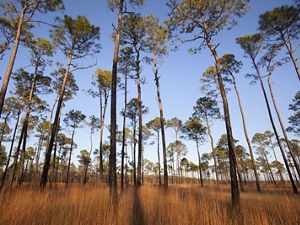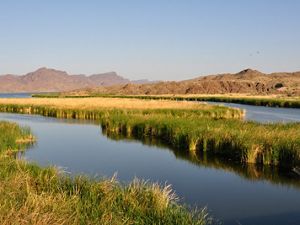Investments in nature help America sustain healthy lands and waters that support thriving, resilient communities and dynamic economies.
The twin crises of biodiversity loss and climate change present an extraordinary challenge. Across the country’s lands, freshwaters and ocean, there are dramatic declines in species and resources. Stopping and reversing this trend requires swift and robust investments.
America’s natural resources are essential to the economy and the health and well-being of the American people. While only representing approximately one percent of the federal budget, congressional investment in conservation programs brings big returns.
Federal conservation programs support the following:
- Local communities and small businesses that depend on the country’s multi-billion dollar recreation economy.
- Farming, ranching, forestry and fishing jobs.
- Safe and plentiful drinking water resources.
- Resilient communities in the face of storms and droughts.
- Reduction of flood and wildland fire risks.
- Higher quality of life through local access to the outdoors, which helps businesses attract and keep employees.
Benefits of Investing in Nature
- The Outdoor Industry Association found that outdoor recreation generates $887 billion in annual consumer spending for the U.S. economy.
- The outdoor recreation economy directly supports 7.6 million American jobs and generates $125 million in federal, state and local tax revenue.
- Natural systems are an efficient way to sustain thriving communities. Watersheds help store water and sustain clean water supplies.
- Protecting and restoring natural coastal systems can reduce impacts to communities from coastal storms—often more cost-effectively than other infrastructure—and enable resilient communities.
- Healthy natural systems support 21.7 million American jobs—17 million related to agriculture, 3 million related to forests, and 1.7 million related to fisheries.

A Better Way: Invest in Nature
Federal science and conservation programs have seen a decline in funding as a percentage of overall spending. Congress took significant action on clean energy, conservation and climate resilience with its passage of the Infrastructure Investment and Jobs Act (IIJA), but funding levels still fall short. It is imperative IIJA funds supplement robust regular appropriations. Federal agencies must continue to provide the technical assistance and program activities needed to act at the scale necessary to address the biodiversity and climate crises.
Climate. Congress should continue to build on the progress made with IIJA by advancing policies and investments that will move the United States closer to its climate goals. This includes incentives to encourage private landowners to restore forest cover, improve forest management and take agricultural management actions that result in mitigation and reduced emissions, as well as investments in research and development to support climate-informed management of natural and working lands and restoration and reforestation of federal forests. Additional investments are needed to improve resilience and avoid carbon losses due to wildfires, hurricanes, pests and pathogens. These efforts will advance U.S. progress on climate, bolster local economies and create healthier communities.
Biodiversity. Conservation and science programs are essential to the prosperity, health and well-being of communities. Funding for these programs has not kept pace with the country’s growing economy and population. Climate change and a wide range of human activities are impacting habitats at an unprecedented and unsustainable rate. There is still time to reverse these impacts to biodiversity, but these changes demand more than scaling up current efforts. The country must expand funding for innovative solutions, including doubling both domestic and international biodiversity funding by 2030.
Nature-Based Solutions. Beyond improving roads, bridges and dams, the country can invest in “natural infrastructure” solutions. For example, restoring reefs and wetlands can help shield coastal communities from storms while also providing clean water, clean air, wildlife habitat and jobs. Planting trees and other innovative forms of “green infrastructure” help cities absorb stormwater. Restoring forests and investing in better agricultural practices upstream helps ensure sustainable water supplies downstream.
Tax Reform. Tax credits or other fiscal incentives for the kind of nature-based solutions described above would be a cost-effective way to stimulate private investments in natural infrastructure that creates public benefits. Incentives for reforestation of private lands should be supported. Incentives for the donation or sale of easements and land for conservation should be maintained.

Function 300 in the federal budget covers natural resources and environment spending. Even with the temporary boost of supplemental funding provided in the Infrastructure Investment and Jobs Act, levels still fall short of previous investments as a percentage of overall funding. Source: White House Historical Tables.



